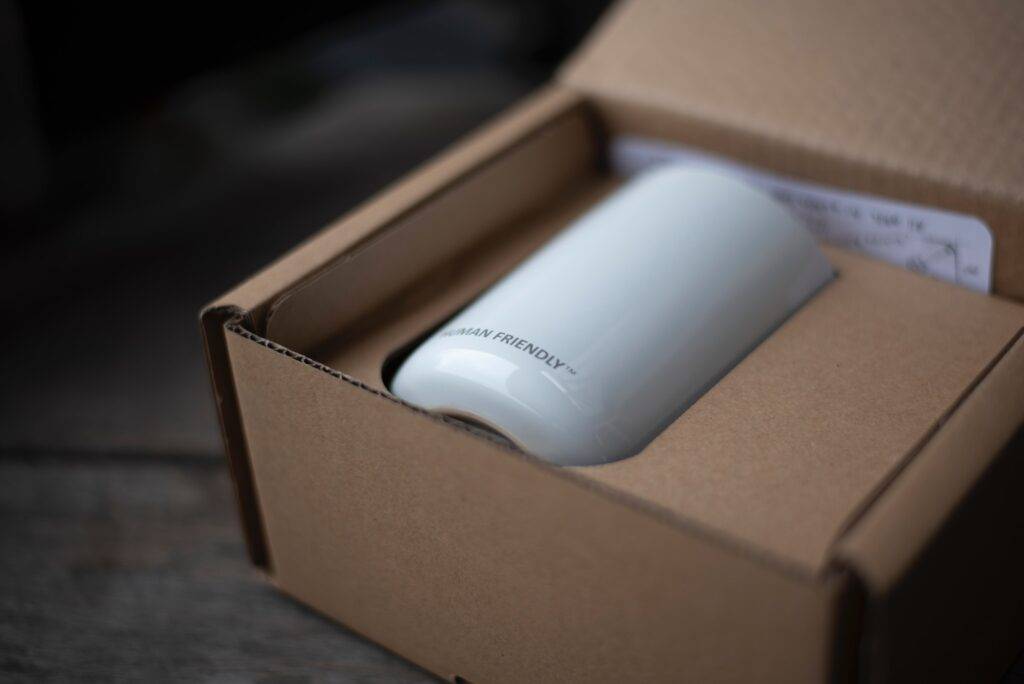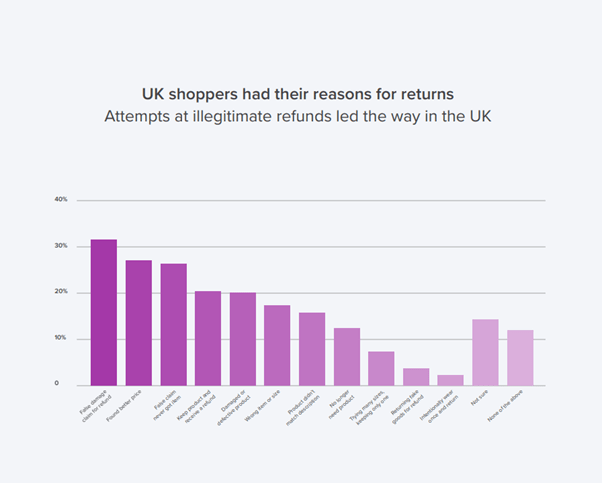Why e-commerce sites should be interested in optimising product pages to reduce returns
Brands often focus on product page conversions for a boost in sales and forget about the impact of returns on your brand’s profit margin. Mishandling returns are a missed opportunity for creating long-term customer relationships and repeat purchases and a significant loss of revenue. Brands should pinpoint the ways they can minimise returns to minimise losses and ensure user conversions are ‘real’ and definitive.

Understanding why consumers return products is key to defining what is missing on your product pages to minimise these.
E-commerce brands should also consider the wider customer journey by inspiring trust and removing potential doubts and anxieties a potential buyer may have. Creating intuitive SEO-optimised pages throughout the site that are as straightforward as possible will cultivate customer loyalty.
Reasons why consumers make returns
Returns will have a significant impact on your product page conversion rates and the first step to combat this is identifying the return triggers on your product page. According to Commerce protection platform Signifyd, fraud is the leading factor in returns in the UK.
The growing cause of return fraud is wardrobing, where the consumer would purchase the item for single use and return it – the current age of social media feeds into this problem because shoppers would buy items solely documented online. An explicitly detailed policy will help but there are other measures brands should do in addition to this. Brands can design swing tags that partly obscure the item and if removed the return will no longer be valid, blacklist repeat offenders and keep detailed communication records for return fraud investigations. Additionally, there are some common reasons for product returns:
The product was damaged in the delivery process
In cases where the product is damaged or defective upon arrival, the best outcome is to return the item. There are several solutions brands can do to minimise damaged products, and can be done by implementing quality checks ahead of shipping, carefully packaging items, working with reputable shipping and fulfilment companies and using shipping insurance to alleviate losses.
Buying the wrong item
Purchasing the wrong item online is prevalent, common reasons would be that the consumer has accidentally bought the wrong size. This happens because there is no physical contact before purchase so brands need to ensure that product descriptions are accurate.
A journey map is a common visualisation tool used in UX to show the process that a person would go through in order to complete a goal such as a purchase. Journey mapping puts together a series of user actions online and can be used in ecommerce to help detect buyer triggers. That way brands can use journey mapping insights to design a site that eliminates scenarios such as buying the wrong item.
False product description
Consumers should not be managing expectations online, the product description should be realistic and precise. Businesses should avoid overstating the product’s capabilities and functions.
The product is no longer needed
Electronics and phone accessories such as chargers, earphones and phone cases frequently fall into this category because technology updates cancel out these items. Additionally, life updates such as moving or downsizing cause people to purge belongings and return merchandise. One thing brands can do to combat this is to offer customers exchange discounts.
Wrong gift
This reason is the most difficult to prevent, as the buyer may be familiar with the functionalities of the product but may not 100% understand the needs and wants of the gift recipient. A method to reduce the amount of gift returns is to offer curated gift guides for a demographic, season or trend. Gift guides allow shoppers to make more informed decisions.
The merchant shipped the wrong item
Consumers have every right to make a return when the merchant ships out the wrong item. Having a clear returns policy will help the consumer know what to expect and brands should have a competent and excellent customer service department to handle tricky scenarios. A positive customer service interaction can have a massive turnaround for your company.

How to optimise your product pages to limit returns
We’ve spoken about how important it is to make sure that your product description is clearly outlined but there are numerous factors in addition to the description to optimise your product pages, here are a few tips below:
- High-quality images and videos from different angles similar to how the shopper would observe in-store. Some brands offer a 360 product viewer that is interactive imagery to allow shoppers to view the products from every angle.
- Easy and obvious call-to-action icons such as ‘add to cart’ or ‘buy now’ increase product page conversions because it eliminates the visitor’s thinking time of what to do next.
- Positive social proof can come in the form of customer reviews, ratings and comments that aid in the brand’s credibility. A recent report by Dixa, states that on average, reviews increase sales by 18% because displaying reviews gives future customers more confidence in their purchasing decisions leading to a higher conversion rate.
- Relevant product suggestions are a form of cross-selling and upselling that help to increase your business’s average order value. Cross-selling recommends complimentary products based on what product the customer has shown interest in. Whereas upselling recommends a relevant product that is slightly more expensive than what the customer is currently browsing, often with an exclusive discount incentive. Both tactics encourage greater purchase totals while maintaining high customer satisfaction.
- Accessible resources such as FAQ’s and quick customer help can be very powerful too. Linking to a knowledge base or providing a short FAQ section on the product page can empower customers to independently find solutions to issues, and keeps the consumer on-site rather than wandering on another site for answers. Most businesses offer live customer support as the quickest option to avoid customer frustration.
- Lastly, on-page SEO optimisation will propel all of the touchpoints above because not only would it be optimised for your target audience, it will be optimised for search engine bots to rank and attract new audiences. You can read more about on-page SEO practices here.
How to make a great returns process for your customer
The returns process is an integral part of your brand’s customer service and there are ways you can retain customers even with an initial imperfect purchase. Start by creating a system that is clear for your consumers to understand and easy to detect on your site. We suggest having your returns policy linked in the footer of every page, FAQ, and inside knowledge-based pages for your products.

Invest in automation to improve the customer experience, and consider creating an online portal or system to initiate a return. A self-service portal can speed up the process for both the brand and the customer by quickly gathering information and creating labels.
Communicate throughout the return process so that the customer remains engaged and knows what is happening every step of the way. This could be through a “thank you” note at the beginning, asking for reasons for returning the product, and how long the return will take and this could also be communicated via email campaigns asking for feedback on the returns process.
In the event the consumer made a return out of their fault it’s likely they will return to your site if they had a great digital shopping experience and as a brand, you will have a chance to shift the sale. When a return is being made try to upsell or cross-sell and push for a repeat purchase.
If it’s the brand’s fault, always offer a thank you to ease the blow of the return process. Ensure to investigate the reason for the return and tailor how you could offer something to encourage a long-term relationship and give you a second chance.
As a company, it’s valuable to analyse your returns policy regularly because the current policy may not work when you have increased stock, new product categories etc. Your returns policy may need to change due to repeated incidences of feedback – doing this would increase the functionality of the feedback loop and improve your overall customer satisfaction.
On a final note
Regularly monitoring your brand’s product pages and returns strategy goes hand-in-hand with e-commerce and is indispensable to the success of your business. Many companies harness customer profiles and carry out top-level SEO optimisation for product pages but forget to recognise macro trends in the industry landscape that would be signifiers for new developments in the returns process. It’s proven that customer-focused returns strategies are for the win, using automation to keep the consumer engaged throughout the process can earn back a future purchase.

